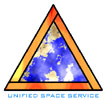WOLF ISLAND by Celia Godkin (cloth, $15.95)
ONE SMALL SQUARE: BACKYARD by Donald M. Silver (cloth, $14.95)
MATHNET CASEBOOK #1: The Case of the Unnatural by David D. Connell and Jim Thurman (paper, $4.50)
MISSION TO DEEP SPACE: Voyager’s Journey of Discovery by William E. Burrows (cloth, $17.95)
Published by Scientific American Books For Young Readers, W.H. Freeman & Co., 1993
For nearly 150 years, Scientific American has been bringing the scientist and the educated layman together at the cutting edge of knowledge. Over that span, it’s become as important in promoting scientific literacy as National Geographic has been in widening cultural horizons. In the multimedia ’90s, the magazine’s endeavors include a PBS television series (“Frontiers”), a subscription book series (Scientific American Library), and a medical database (Scientific American Medicine).
Now, Scientific American and W.H. Freeman & Co. are reaching out to a crucial and heretofore neglected audience: children. With a commitment to presenting science as “an adventure in detection, investigation, exploration, and discovery,” Freeman has launched a new imprint, Scientific American Books for Young Readers. And the first shelf-full of offerings under the new imprint shows great promise.
Wolf Island, a slim but appealingly illustrated picture-book for ages 4- 8 by Celia Godkin, addresses the connectedness of life. Avoiding the temptations of anthropomorphism, Godkin teaches a gentle ecological lesson by depicting how the natural balances in the wild are upset when the wolves leave their little island for a year.
Intended for somewhat older children, Donald M. Silver’s One Small Square: Backyard is a marvelous activity guide to discovering the variety and complexity of the living community in an ordinary yard–a square yard of yard, to be exact. Profusely illustrated by Patricia Wynne, the book guides the reader through a leisurely “field expedition,” and includes a reference guide to the plants, animals, and other features that can be found in the biome just outside our back doors.
One of the most popular features of PBS’s “Square One TV” has been its droll “Dragnet” parody, Mathnet, featuring a pair of deadpan detectives who use mathematics to solve crimes. Connell and Thurman’s The Case of the Unnatural is the first in a series of novelizations of classic Mathnet episodes–this one involving a minor-league baseball star whose numbers are too good to be true. Filled with puzzles, problems, and secret codes, this series should be a hit with any “Square One TV” fan.
But the best of these four new books might be William E. Burrow’s dramatic Mission to Deep Space , a lucid and vivid account of the exploration of the outer planets by the robot Voyager spacecraft. Targeted for ages 9 to 14 and illustrated throughout with spectacular Voyager photographs of Jupiter, Saturn, Uranus and Neptune, this 80-page oversized volume sweeps the reader along on one of the century’s most exciting and important journeys of discovery, out to the very edge of the Solar System.
If publisher Jacqueline Ball can sustain and build on the quality of these early offerings, the Scientific American Books for Young Readers imprint should fast become a valued addition to both the Scientific American tradition and the libraries of bright, curious children everywhere.
–Lansing resident and former science teacher Michael P. Kube-McDowell is the author of eight novels, including Exile and the Hugo Award nominee The Quiet Pools.

